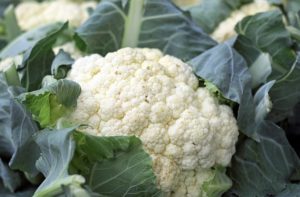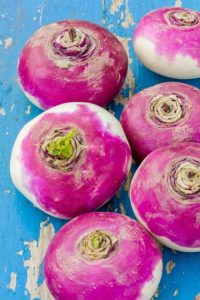
What are some keto alternatives to potatoes? Do you miss potatoes? I sometimes do. I don’t eat a lot of refined grains so I never miss things like bread or baked goods because I don’t eat those even when I am off keto. Wheat and me are not friends and I avoid gluten so even if I am off keto, I don’t eat these things. But I do like potatoes. So when I am on keto, it is nice to once in a while have an keto alternative to potatoes that is not so loaded with carbs. Here are a few options for you (and yes, cauliflower is on the list but it lacks both the taste and texture but you know — super low carbs)
- Cauliflower: This versatile vegetable can be used in many different ways, from mashed “potatoes” to roasted “fries.” You can also use cauliflower rice as a low-carb alternative to regular rice.
- Radishes: Although they may not seem like an obvious substitute for potatoes, radishes can be roasted or sautéed and have a similar texture and flavor. They’re also low in carbs and high in fiber. I found radishes to be the closest in texture to “pan fries” when you saute them in a pan so if you like that, this is a good option.
- Turnips: These root vegetables have a slightly sweet and nutty flavor and can be boiled, roasted, or mashed like potatoes. They’re also a good source of fiber, vitamin C, and potassium.
- Rutabagas: Similar to turnips, rutabagas can be used in a variety of potato-based dishes. They have a slightly sweeter flavor and are also a good source of vitamin C and fiber.
- Jicama: This crunchy, slightly sweet root vegetable can be sliced into “fries” or used in salads for a potato-like texture. It’s also low in carbs and high in fiber and vitamin C. It also can be sliced super thin to make a crunchy taco shell (you can also buy these in many stores if you super thin slicing skills are not all that.
Remember to keep track of your daily carb intake and choose the vegetables that fit into your ketogenic diet plan.
Calories and Carb Counts for these Keto Alternatives to Potatoes
Cauliflower

Cauliflower is a nutritious vegetable that is low in calories and carbohydrates. Here are the approximate amounts of calories and carbs in one cup (100 grams) of raw cauliflower:
- Calories: 25
- Carbohydrates: 5 grams
Of those 5 grams of carbs, 2 grams come from fiber and 2 grams come from sugar. This means that cauliflower has only 3 grams of net carbs per cup, which makes it a great option for those following a low-carbohydrate or ketogenic diet.
Cauliflower is also a good source of other important nutrients, including vitamin C, vitamin K, folate, and potassium. It can be cooked in a variety of ways, including roasting, steaming, or sautéing, and can be used as a low-carb substitute for rice or mashed potatoes.
Radish

Radishes are a low-calorie and low-carbohydrate vegetable that are often used in salads, garnishes, and as a crunchy snack. Here are the approximate amounts of calories and carbs in one cup (116 grams) of sliced raw radishes:
- Calories: 19
- Carbohydrates: 4 grams
Of those 4 grams of carbs, 2 grams come from fiber and 2 grams come from sugar. This means that radishes have only 2 grams of net carbs per cup, making them a great option for those following a low-carbohydrate or ketogenic diet.
Radishes are also a good source of vitamin C, folate, and potassium, and contain small amounts of other nutrients such as calcium and magnesium. They can be eaten raw or cooked, and can be added to salads, sandwiches, or soups. Additionally, their leaves, which are also edible, are a good source of vitamin C, calcium, and iron.
Turnips and Rutabagas

Turnips are a root vegetable that are low in calories and carbohydrates. Here are the approximate amounts of calories and carbs in one cup (130 grams) of diced raw turnips:
- Calories: 36
- Carbohydrates: 8 grams
Of those 8 grams of carbs, 2 grams come from fiber and 5 grams come from sugar. This means that turnips have only 6 grams of net carbs per cup, making them a good option for those following a low-carbohydrate diet.
Turnips are also a good source of vitamin C, folate, and potassium, and contain small amounts of other nutrients such as calcium and magnesium. They can be eaten raw or cooked, and are often used in stews, soups, and roasted vegetable dishes.
It’s worth noting that while turnips are a lower-carbohydrate vegetable, they do contain more carbohydrates than some other low-carb vegetables like leafy greens or broccoli. As with any food, it’s important to consider the overall macronutrient content and your individual dietary needs and goals when incorporating turnips into your meals.
Rutabaga, also known as swede, is a root vegetable that is low in calories and carbohydrates. Here are the approximate amounts of calories and carbs in one cup (140 grams) of cubed raw rutabaga:
- Calories: 50
- Carbohydrates: 12 grams
Of those 12 grams of carbs, 3 grams come from fiber and 5 grams come from sugar. This means that rutabaga has 9 grams of net carbs per cup, which is still relatively low compared to some other vegetables.
Rutabaga is also a good source of vitamin C, potassium, and fiber, and contains small amounts of other nutrients such as calcium and magnesium. It can be eaten raw or cooked, and is often used in stews, soups, and roasted vegetable dishes.
Like turnips, rutabaga is a bit higher in carbohydrates than some other low-carb vegetables, so it’s important to consider the overall macronutrient content and your individual dietary needs and goals when incorporating it into your meals.
Jicama

Jicama is a root vegetable that is low in calories and carbohydrates. Here are the approximate amounts of calories and carbs in one cup (130 grams) of sliced raw jicama:
- Calories: 49
- Carbohydrates: 12 grams
Of those 12 grams of carbs, 6 grams come from fiber and 2 grams come from sugar. This means that jicama has only 6 grams of net carbs per cup, making it a great option for those following a low-carbohydrate or ketogenic diet.
Jicama is also a good source of vitamin C, fiber, and potassium, and contains small amounts of other nutrients such as calcium and magnesium. It has a crunchy texture and mild flavor, and can be eaten raw or cooked. Jicama is often used in salads, slaws, and as a low-carb substitute for potatoes in dishes like french fries or hash browns.
Overall, jicama is a nutritious and low-carbohydrate vegetable that can be a great addition to a healthy diet.